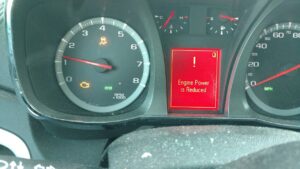You’ve probably noticed those small badges on the back of cars—letters like “LE,” “EX,” “LTZ,” or “Sport.” If you’ve ever bought a car secondhand, or just haven’t paid close attention to the details, you might wonder: what do those mean? More importantly, how can you find out what trim your own car is?
Let’s say you own a 2015 Toyota Camry. It looks sleek, drives well, and gets the job done. But when you go online to order new floor mats, you’re asked, “What trim level is your vehicle?” Suddenly, you realize you’re not entirely sure. That small detail can affect the parts you buy, the resale value, your insurance rates, and even the features your car has that you may not be using.
In this guide, we’ll walk through everything you need to know about trim levels—what they are, how to find yours, and why it matters more than most people think.
What Is a Trim Level?
Trim levels are essentially different versions of the same car model, each offering a unique combination of features and equipment. Think of them as packages that group together upgrades in style, performance, technology, or comfort.
Automakers create trim levels so buyers can choose a version of the car that fits their needs and budget. For example, a base trim might come with fewer features and a lower price, while a higher trim may include premium sound, leather seats, sunroof, advanced safety systems, and upgraded wheels.
These differences aren’t always visible at first glance, but they can have a major impact on the car’s value and what’s inside.
Why It Matters to Know Your Car’s Trim
Knowing your vehicle’s trim level is more than just a piece of trivia—it can be useful in several ways:
- Parts and Accessories: Many replacement parts (like headlights, wiper blades, or sensors) are trim-specific.
- Resale and Trade-In Value: Higher trim levels usually sell for more.
- Insurance: Some insurers use trim data when calculating premiums.
- Technology and Features: You might have features you’re not even using because you don’t know they’re there.
- Diagnostics and Maintenance: Some service instructions and recalls apply to specific trims only.
Ways to Find Out Your Car’s Trim Level
1. Look at the Exterior Badging
The simplest place to start is on the back of your car. Manufacturers often place trim badges near the model name or on the sides.
For example:
- A Toyota Corolla might show “LE” or “XSE.”
- A Ford Escape could say “SE,” “Titanium,” or “ST.”
- A Honda Civic might be labeled “LX,” “EX,” or “Touring.”
If you don’t see a badge, that doesn’t necessarily mean you have the base model—it might have been removed or was never there. Some trims have discreet or no external labeling.
2. Check the Interior Features
If there’s no badge or it’s missing, your next best clue is what’s inside the car. Trim levels are often defined by their interior features. Look at the following:
- Seats: Are they cloth, leather, or leatherette?
- Infotainment system: Do you have a touchscreen? Navigation? Premium audio?
- Climate control: Manual controls or automatic dual-zone?
- Other features: Heated seats, power seats, keyless start, blind-spot monitoring, or sunroof?
Make a list of your car’s features and compare them to the options listed in your model’s brochure or online guide for that year.
3. Use the Vehicle Identification Number (VIN)
Your VIN is a 17-character code unique to your car. It’s printed on a metal plate on the dashboard near the windshield and can also be found on your registration, insurance card, or door frame sticker.
With your VIN, you can:
- Run a VIN decoder online (like Edmunds, NHTSA, or your automaker’s website).
- See a build sheet or factory configuration, which includes trim and packages.
- Check dealership service records, which often list the trim.
This is one of the most accurate ways to identify your trim level.
4. Look at the Window Sticker (Monroney Label)
If you still have the original window sticker from when the car was purchased new, it will clearly list the trim level near the top, along with all included features, pricing, and optional equipment.
Don’t have the sticker? Some dealerships can provide a reproduction or printout from their system using the VIN.
5. Owner’s Manual and Service Booklet
The owner’s manual might mention the trim level directly, or at least include feature references that help you narrow it down. If your car has a separate service booklet, trim information is sometimes printed on the first few pages.
6. Check Your Registration or Insurance Documents
Depending on your state or insurance provider, your registration or policy documents may list the full model and trim. However, some just use general terms, so it’s not always guaranteed.
7. Ask a Dealership or Use Online Tools
Many automakers offer online portals where you can enter your VIN and get a complete breakdown of your car’s specifications, including trim level.
You can also call or visit your dealership’s service department. They usually have access to internal systems that can confirm your car’s trim.
Examples of Trim Levels by Manufacturer
Trim levels vary depending on the brand and model. Here’s a quick snapshot of how different manufacturers structure their trims:
Toyota Corolla (2021)
- L (base)
- LE
- SE
- XLE
- XSE
Honda Accord (2020)
- LX
- Sport
- EX
- EX-L
- Touring
Ford F-150 (2022)
- XL
- XLT
- Lariat
- King Ranch
- Platinum
- Limited
Subaru Outback (2023)
- Base
- Premium
- Onyx Edition
- Limited
- Touring
- Wilderness
Chevrolet Equinox (2021)
- L
- LS
- LT
- Premier
Each level adds more features as you go up. Some trims may also include optional packages that enhance specific areas like towing, tech, or safety.
What Makes One Trim Different from Another?
Understanding what separates one trim from another can help you identify yours. Trim levels typically build on one another. A higher trim will include everything from the lower level plus additional upgrades.
Here are the main areas where trims differ:
- Technology: Advanced infotainment, navigation, wireless charging, or parking assist.
- Comfort: Power-adjustable and heated/ventilated seats, leather upholstery, climate zones.
- Performance: Turbocharged engines, sport suspension, all-wheel drive.
- Exterior: Larger wheels, LED headlights, sunroofs, paint options.
- Safety: Blind spot monitoring, adaptive cruise control, lane keep assist.
Knowing these distinctions can help you confirm your car’s identity even without documentation.
Common Misconceptions
“All models are the same except for appearance.”
Not true. Some trim levels include mechanical upgrades like different engines, transmissions, or suspension setups.
“My car doesn’t have a badge, so it must be base trim.”
Not always. Some trims don’t come with a visible label, and badges are sometimes removed.
“If it has leather seats, it’s top trim.”
While leather often appears in higher trims, some mid-level trims offer it as an option. You could have an EX with leather without having the top-level Touring model.
Tips for Confirming Trim Level on Used Cars
If you’re buying or selling a used car, knowing the trim level is especially important. Don’t rely solely on the seller’s word.
Here’s what to do:
- Ask for the VIN and run it through a decoder.
- Check for options and compare to trim breakdowns for that model year.
- Look at physical clues—seat material, screen size, safety features.
- Ask for the original window sticker or build sheet.
If buying from a dealership, they should be able to verify the trim level for you.
Your car’s trim level is more than just a few letters or a badge—it defines how your vehicle is equipped, what parts it needs, and how much it’s worth. Whether you’re shopping for accessories, selling your car, or just curious about what you own, it’s worth taking a few minutes to find out exactly what trim you have.
Between VIN lookups, exterior features, and interior clues, figuring out your trim doesn’t have to be complicated. And once you know it, you can make better decisions when it comes to maintenance, upgrades, and even your next car.




